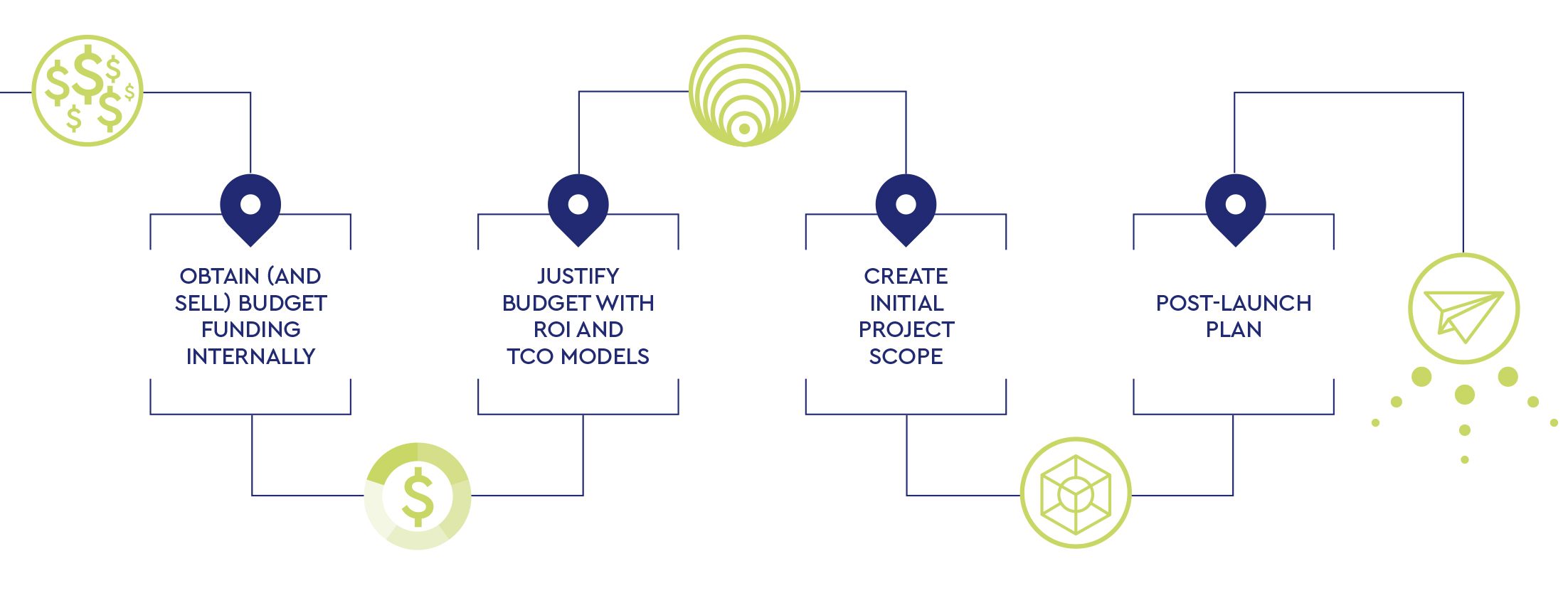
Putting your store on a solid foundation
Why moving to a new tech platform requires meticulous planning
Initiating a replatforming project is a serious and complex decision. It’s one that businesses typically only move forward with after experiencing significant issues running or growing their business, and often only after going to great lengths to make an existing system work in ways it was never intended. Subsequently, embarking on an ecommerce replatforming project is one of the most important IT and Marketing business decisions a company will make to lay the foundation for future success.
Any replatforming project requires a significant investment of time and resources, as well as a commitment to organisational and operational change. All stakeholders need to fully understand that the resulting platform will impact the business over the course of several years. On a human level, the success or failure of a replatforming project can make or break careers, which is why it’s imperative to do things right from the outset.
Planning and strategy
Just as a journey of a thousand miles begins with a single step, any replatforming project must begin with a cohesive, measured plan.
Determine the vision
Before choosing a platform, determining a budget, or selecting a partner, it’s crucial to identify the overall digital vision for your business. If your team does not already have an aligned company vision that encompasses the business’s goals, hold a workshop with your team and partners. Your vision will inform every decision throughout the process and is the essential first step to replatforming successfully.

Set smart goals
Once your vision is solidified, it’s imperative that it’s specific, measurable, achievable, relevant and timely (SMART). Set SMART business goals, framed as key performance indicators (KPIs), that serve your vision, whether it be a 10% increase in revenue within one fiscal year or a decrease in maintenance cost production six months postlaunch. These goals will steer important decisions regarding everything from platform selection and site functionality to user experience and marketing efforts.
It’s important to note that goals and KPIs are ever-changing. Your team should feel empowered to adapt and change these as the situation dictates. It’s especially important to revisit these post-launch before creating any new marketing or technical roadmaps.
Obtain (and sell) budget funding internally
Recent Gorilla Group benchmark studies on a sampling of both B2B and B2C ecommerce channels found that approximately 53% of companies surveyed were on custom or homegrown platforms.
In order to determine a budget for the upfront cost of the replatform, be sure to review costs for building and customising the existing platform over the past three or more years.
Include:
- Agency services fees
- Platform costs
- Internal resource costs and salaries
How much the site previously cost to “get out the door” should be evaluated as a data point, but often is not a relevant indicator for current platform discussions. This is due to the nature of evolving technology, the services offered, and the increasingly integral role commerce plays within the technology ecosystem and brand experience.
If the capital expenditure becomes more than expected, work with your trusted commerce partners to identify options to spread out costs over time as an operational expenditure. With cloud and usage-based contracts becoming commonplace in IT departments, this could be a viable method to streamline the internal approval process.
Justify budget with ROI and TCO models
What will the new platform cost over its lifecycle? What are the expected financial benefits of replatforming? These questions should be answered early in the process, before any commitments to move forward with a platform or agency are made.
Create a Total Cost of Ownership (TCO) model that covers a five-year period, including software licence fees, third-party software add-ons, design and implementation services, revenue sharing (applies to some ecommerce platforms and service providers), cloud hosting fees, post-launch maintenance and support, planned site enhancements, customer experience management/ marketing services, and software upgrades and security patches.
Estimate Return on Investment (ROI) over the same period. Project lifts attributable to added functionality, merchandising tools, upgraded user experience, and improved SEO against current metrics as benchmarks. If your overall company revenue has been increasing despite legacy technology, utilise the growth figure and parlay a portion of growth into the digital commerce channel.
Before choosing a platform, determining a budget or selecting a partner, it’s crucial to identify the overall digital vision for your business
Also, consider savings related to sunsetting legacy systems, automating manual processes, and improving efficiency.
Create initial project scope
Our approach focuses on including key features, user experience, and brand engagement deliverables within the initial launch to meet customer expectations. We recommend shortening the initial project timeline (to initial launch date), thus increasing the time-to-value, and enabling continuous post-launch improvement. This differs from the traditional Minimal Viable Product (MVP) approach which favours a strippeddown approach that can underwhelm users, especially if sacrificing existing functionality. In other words: don’t try to do everything at once, but don’t deliver too little. Many customers will not give you a second chance.
To do this, make sure the new functionality (e.g. Loyalty Programmes, Account Registration, etc.) aligns with intended business and/or customer use cases during platform selection. If not, additional enhancements will be required, which will likely add to project costs and timeline.
Post-launch plan
Approaching a post-launch marketing and technical strategy is somewhat dependent upon available resources. Some prefer to have an 18-to-24 month post-launch plan laid out from the beginning, while others tackle it once everything is finally up and running. Decide what makes the most sense for your team and plan accordingly. Regardless of timing, plan for both marketing and functional additions to the site. Define and express critical platform needs for launch and make note internally as to why certain functionality was either omitted, replaced, or put on the back burner. If a phase two is necessary to launch in a timely manner or within budget, ensure next steps are included in your plan.

Key takeaways:
- Determine why you need to replatform in the first place. Solidify the company vision and measurable business goals that necessitate replatform
- Use TCO and ROI models to justify replatform costs
- Choose a platform based on your scope requirements, not the other way around
- Set yourself up for a successful launch by planning for postlaunch initiatives early
Read more from Atticus Journal Volume 25
This is an excerpt from The ecommerce replatforming checklist 3.0 406 KB
published on
10 November 2020
Category
More in The Atticus Journal

Generative AI: mitigating risk to unlock opportunity
H+K’s Allison Spray on managing the commercial and reputational risks that the proliferation of generative AI will present

Making sustainability profitable
Sustainability investments must deliver returns – both financial and reputational – to be ‘sustainable’ for business. Something needs to change, says Luc Speisser

Sustainability comms must get real
There’s a disconnect between the way corporations talk about climate change and how the public discusses the same issue. That’s the conclusion of research by Jamie Hamill, Alessia Calcabrini and Alex Kibblewhite.

